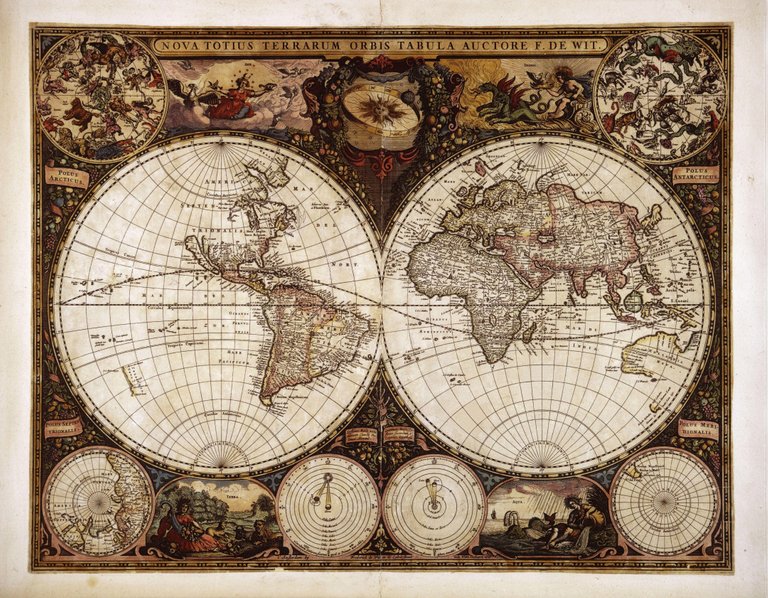
The Chinese have a proverb:
“The longest journey starts with but a single step.”
The mystery that sparked the search
What intrigued the internet was a declassified document by the CIA, which mentions the deletion of this country’s history which seems to have been located in the land of modern Russia/Siberia & Asia.
According to the old world maps, at times it reached the borders of China and Mongolia. Little is known about the people inhabiting the land at that time and due to the lack of information people are still speculating if it was an area or an actual country. Europeans during the 19th century and earlier seem to have called Asian areas Tartary before they explored them and recorded them in greater detail.
Was Tartaria’s history deleted?
This is an excerpt of the declassified CIA created in 1957.
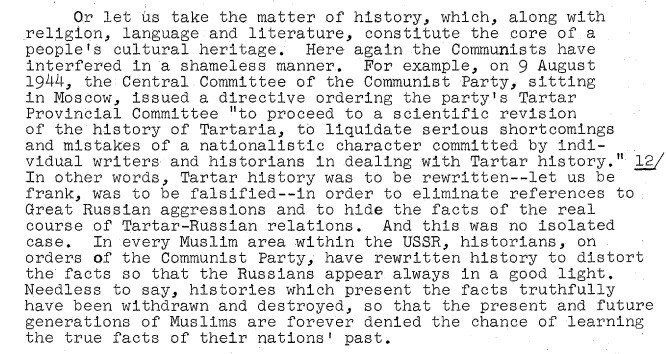
According to Wikipedia:
“Tartary (Latin: Tartaria) or Great Tartary (Latin: Tartaria Magna) was a historical region in Asia located between the Caspian Sea-Ural Mountains and the Pacific Ocean. Tartary was a blanket term used by Europeans for the areas of Central Asia, North Asia, and East Asia unknown to European geography. It encompassed the vast region of the Pontic-Caspian steppe, the Volga-Urals, the Caucasus, Siberia, Inner Asia, Mongolia and Manchuria.
Knowledge of Manchuria, Siberia and Central Asia in Europe prior to the 18th century was limited. The entire area was known simply as “Tartary” and its inhabitants “Tartars”. In the Early modern period, as understanding of the geography increased, Europeans began to subdivide Tartary into sections with prefixes denoting the name of the ruling power or the geographical location. Thus, Siberia was Great Tartary or Russian Tartary, the Crimean Khanate was Little Tartary, Manchuria was Chinese Tartary, and western Central Asia (prior to becoming Russian Central Asia) was known as Independent Tartary.”
Wikipedia claims that Tartaria was a blanket term and that not much knowledge was available to Europeans but in this book below written by Giovanni da Pian del Carpine in 1252 we can find an extensive research made about the Tartars and their empire.
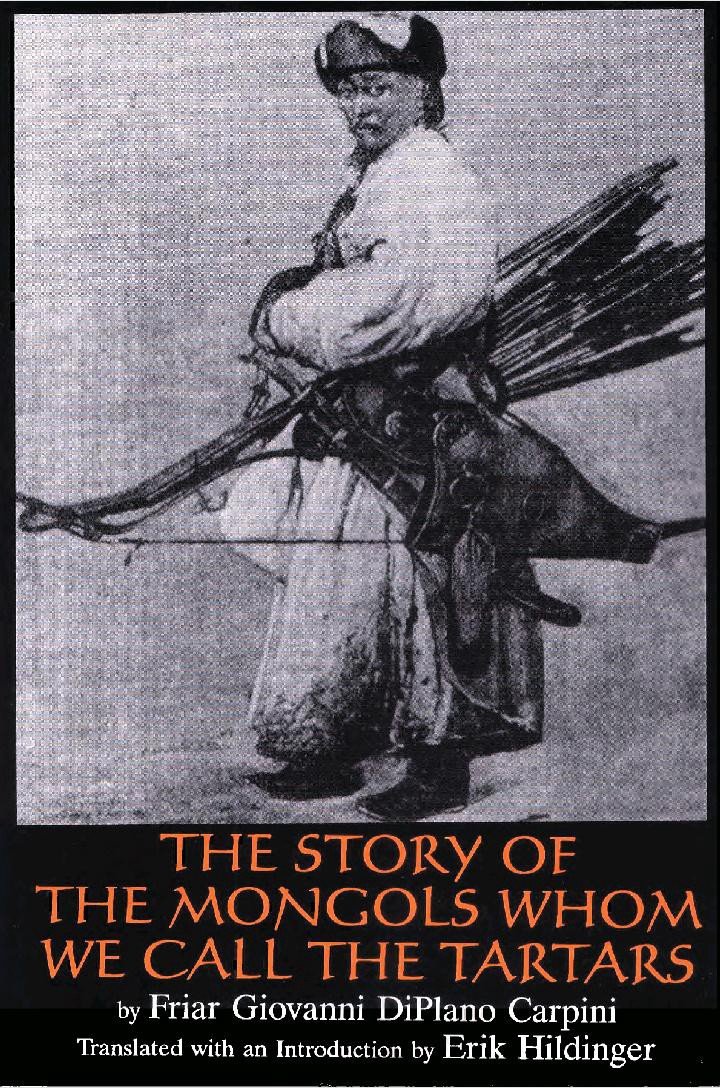

Maps
From a vast Tartaria / Grand Tartaria / Grande Tartary in the beginning, it later splits into:
- Siberia & Russian Tartary / Tartaria Moscovite
- Chinese Tartary / Eastern Tartary
- Independent Tartaria / Tartary / Western
We can also see that north of modern Russia the Sea of Tartary becomes the Frozen Ocean / Ice Sea, modern Arctic ocean.
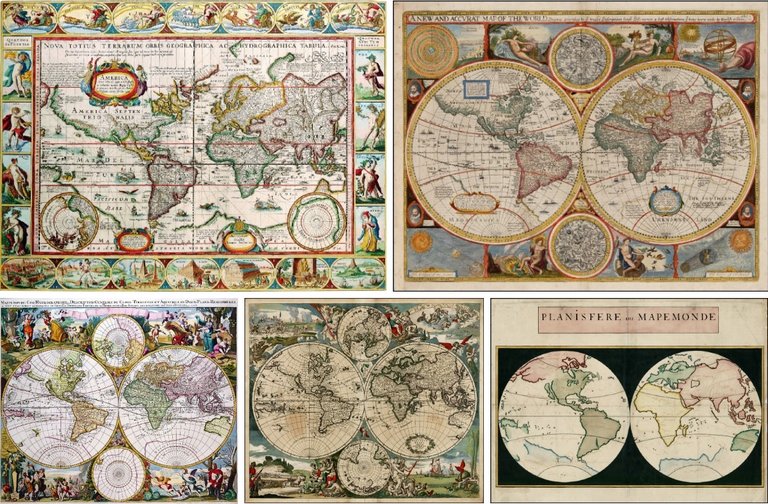
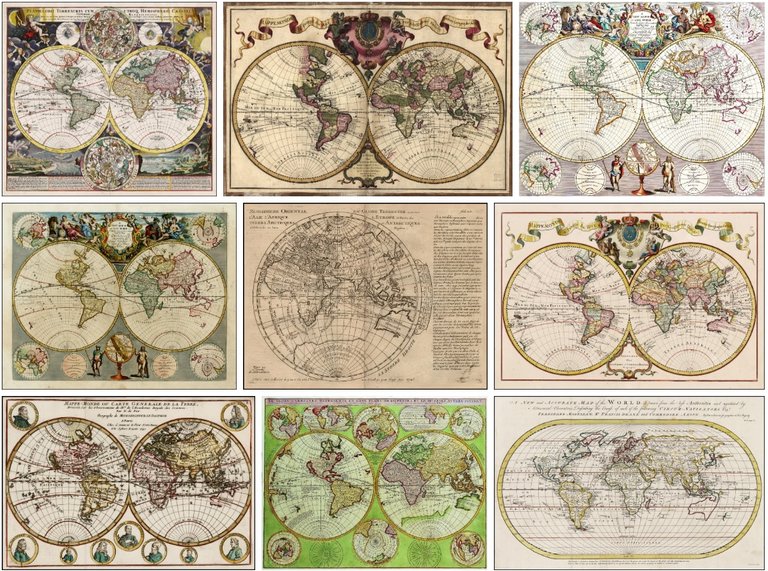
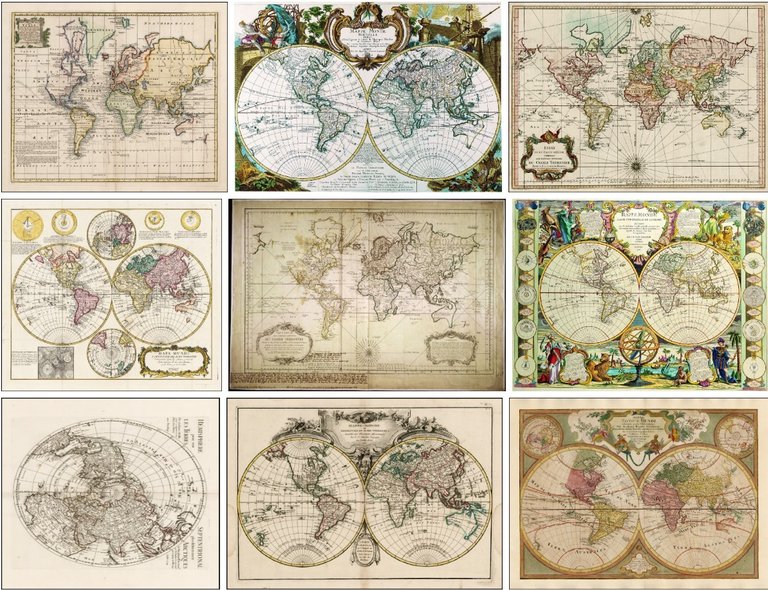

The Khanate of Khazan (1438–1552) (previously Volga Bulgaria), now named Tatarstan, a republic of the Russian Federation, had the same flag as the Empire of Tartarie.


In a 1824 map Tataria, Chinese Tataria and China seem to co-exist on the map.
In 1850 Mongolia starts to appear where Independent Tartary was before, and China seems to be expanding and becoming an Empire.
In 1852 the Chinese Empire consists of Mongolia, China bordering with Tartary on the west and the Russian empire on the north.
According to a 1875 map, Independent Tartary is located east of the Caspian sea, where modern Turkmenistan, Tajikistan and Uzbekistan are. They belong to the larger area of Turkestan.
Turkestan, also spelled Turkistan (Persian: ترکستان, romanized: Torkestân, lit. ‘Land of the Turks’), is a historical region in Central Asia between Ural and Siberia to the north; the Gobi Desert to the east; Tibet, Kashmir, Afghanistan, and Iran to the south; and the Caspian Sea to the west.
Turkestan includes present-day Kazakhstan, Kyrgyzstan, Tajikistan, Turkmenistan, Uzbekistan, the Tarim Basin of China (also known as East Turkestan), and parts of northern Afghanistan (known as Afghan Turkestan).
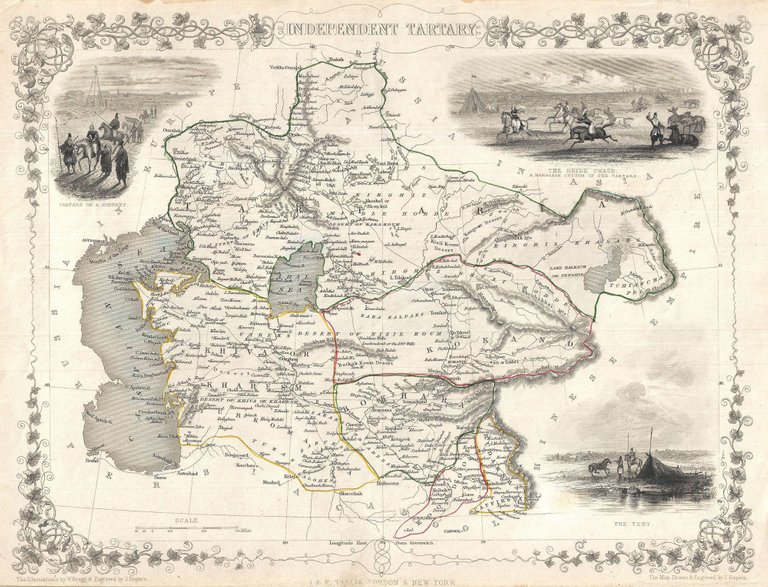
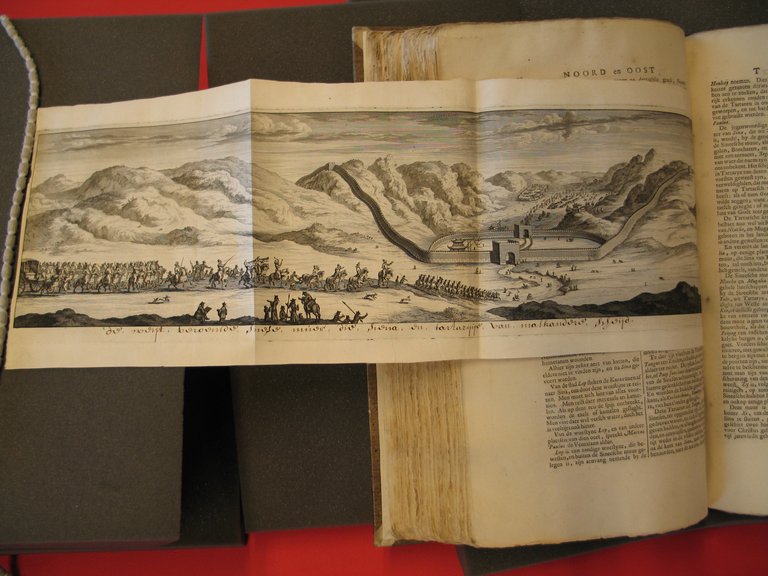

Tartarian language
There are some mentions of the Tartarian language from different sources but it is still unclear which was their actual language. There are many nations, tribes, dialects and languages in Asia during the 15–18th centuries, so only expert researchers could make a study to find out more about this language.
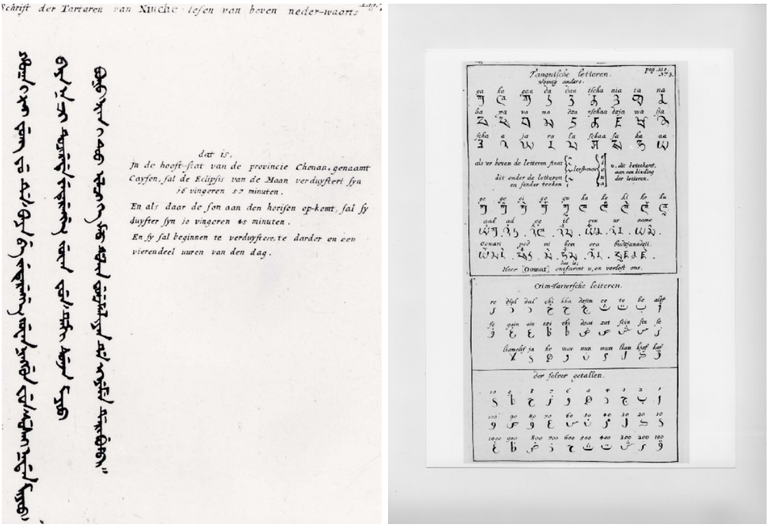
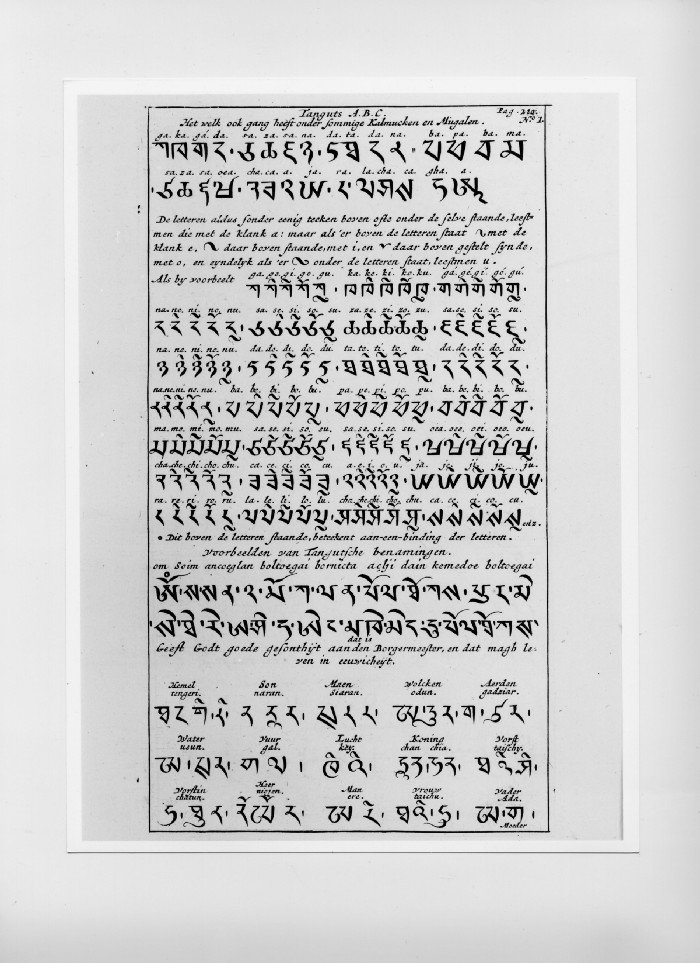

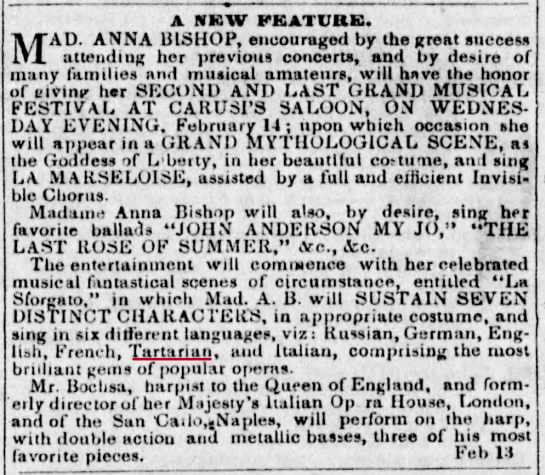


Culture
The following images are taken from Nicolaen Witsen’s book 'North and East Tartary' and can be found here.
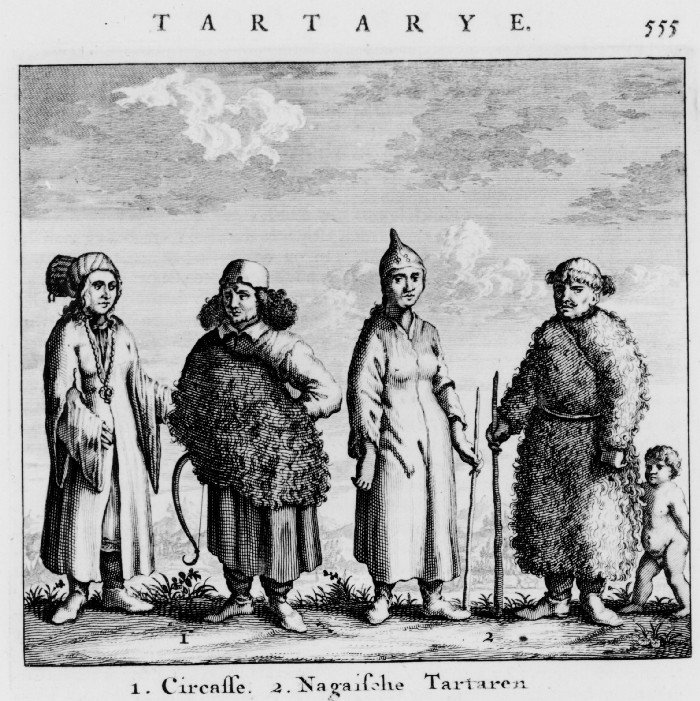
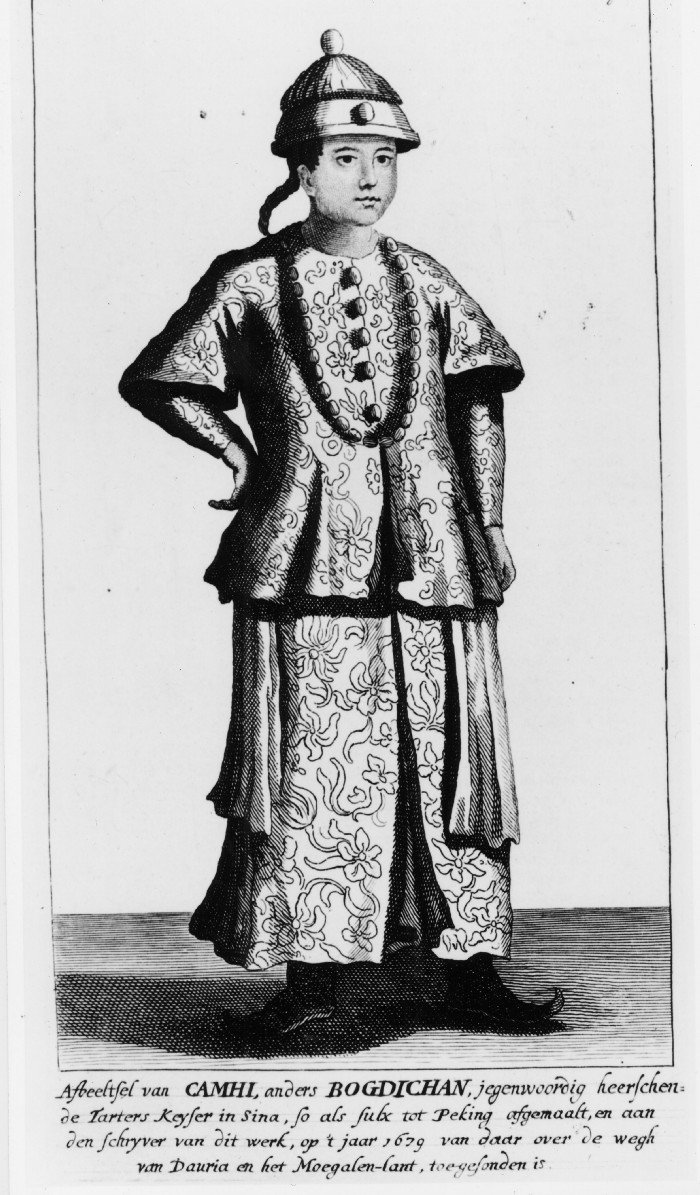
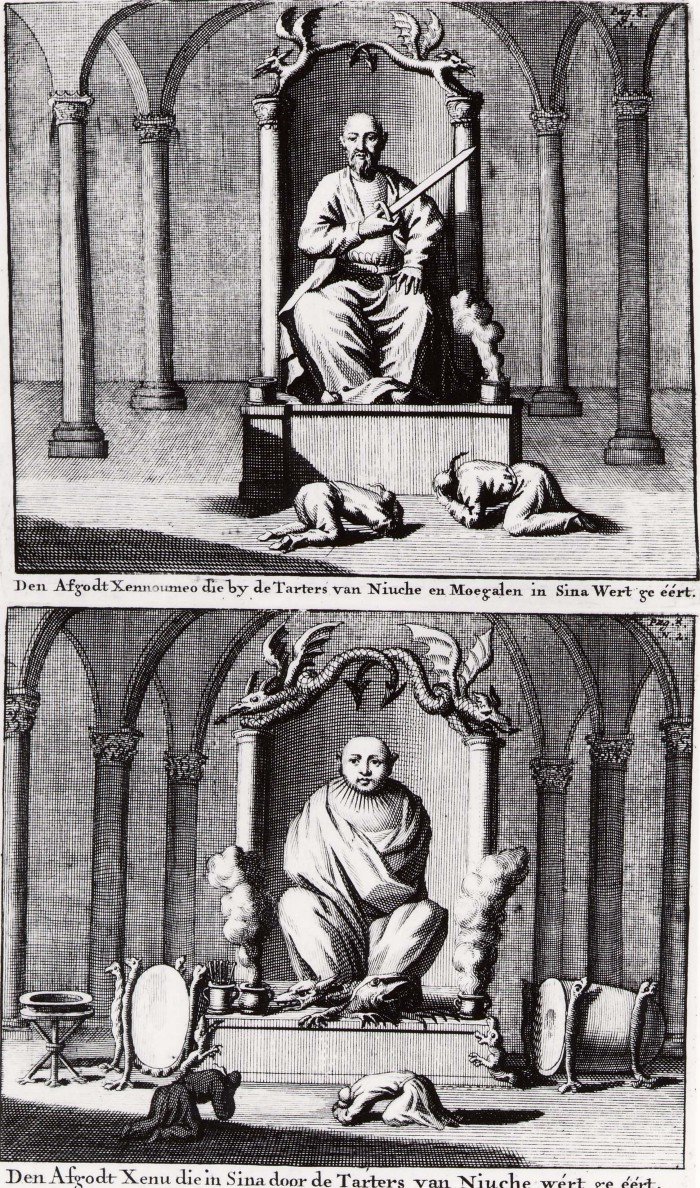
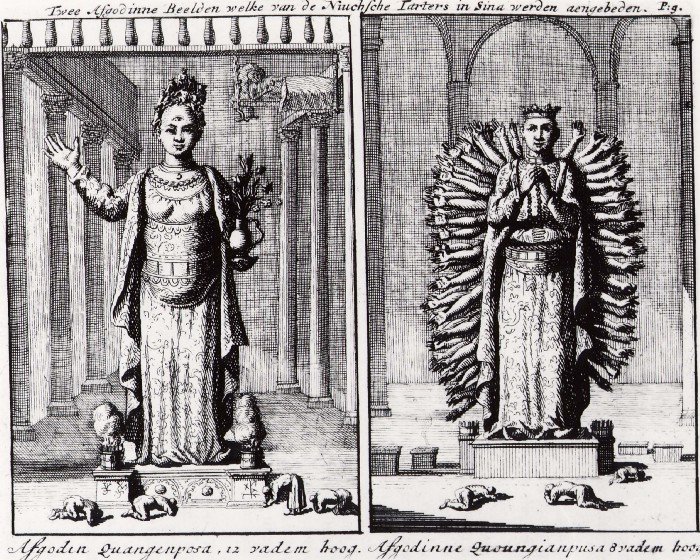
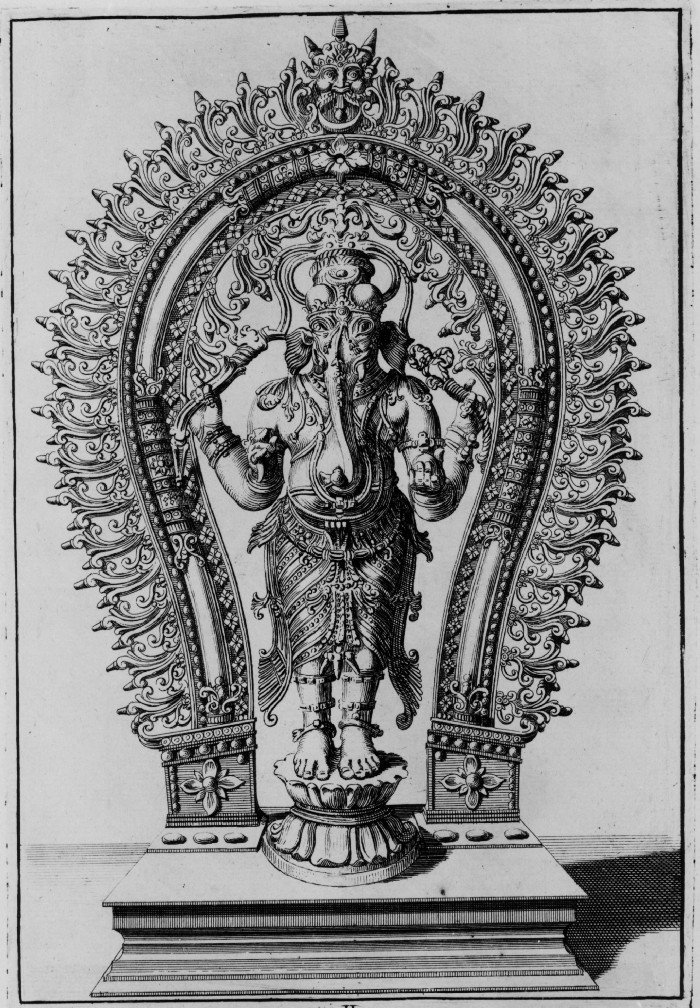
![A Buryat with his Wife and Daughter. (Translation of the subtext: The hair is removed from the man’s face except for the chin, The seam above the pleats is lined with fur, The boots are [made] of hides with the rough side outside, The caps are [made] of red fox, The skirts [are made] of blue cotton, Rings, coins and corals they wear in their braids.)](https://images.hive.blog/768x0/https://miro.medium.com/max/700/1*tN1FB1wFSIPrRU3zgdMdpQ.jpeg)
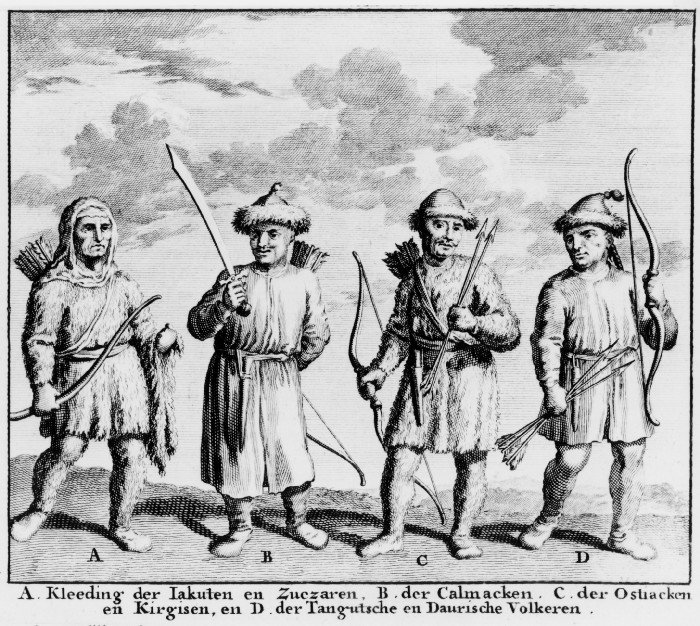
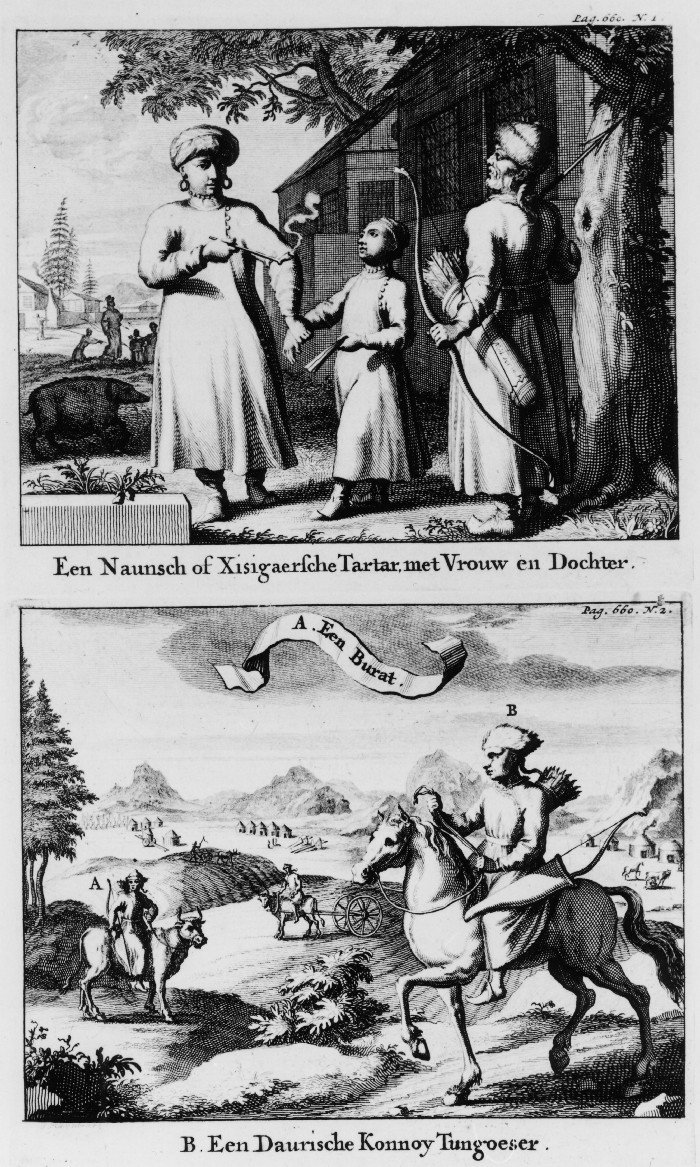

![A. Nissou Tungus during the Summer | B. Nissou Tungus during the Winter. | C.Tungus people around Irkut[sk], Man. Spouse and children](https://images.hive.blog/768x0/https://miro.medium.com/max/700/1*HLWGN2PzNG21IWyv_jJtlg.jpeg)
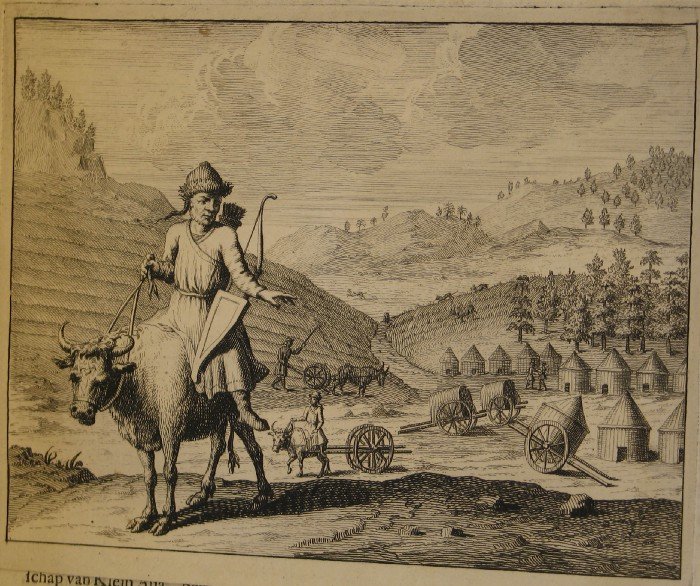
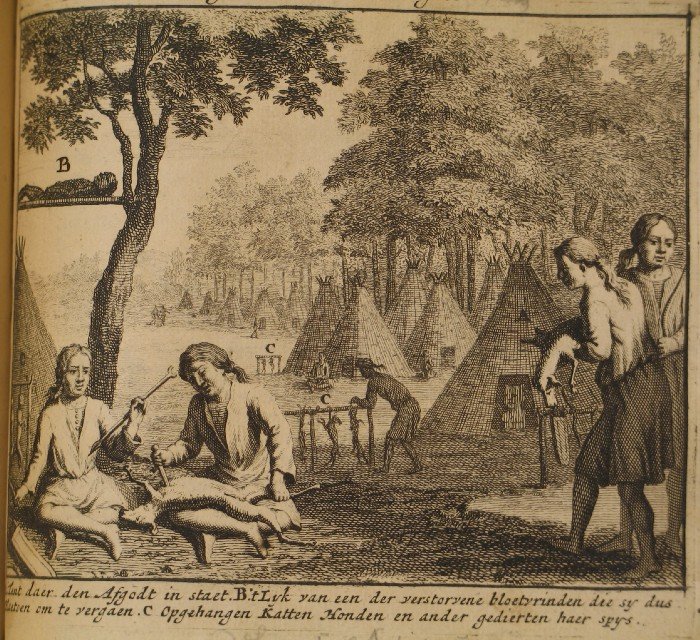
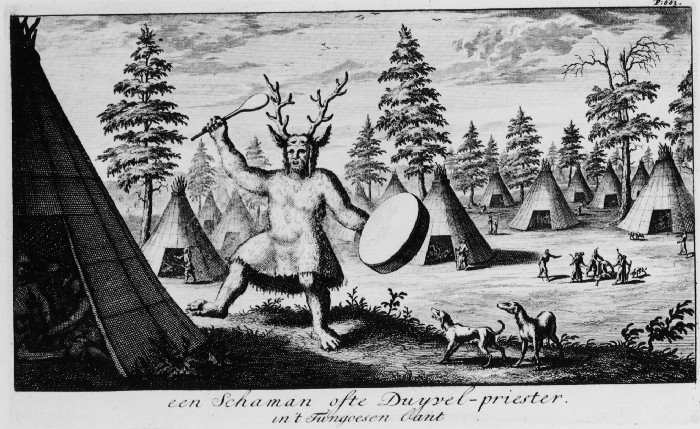
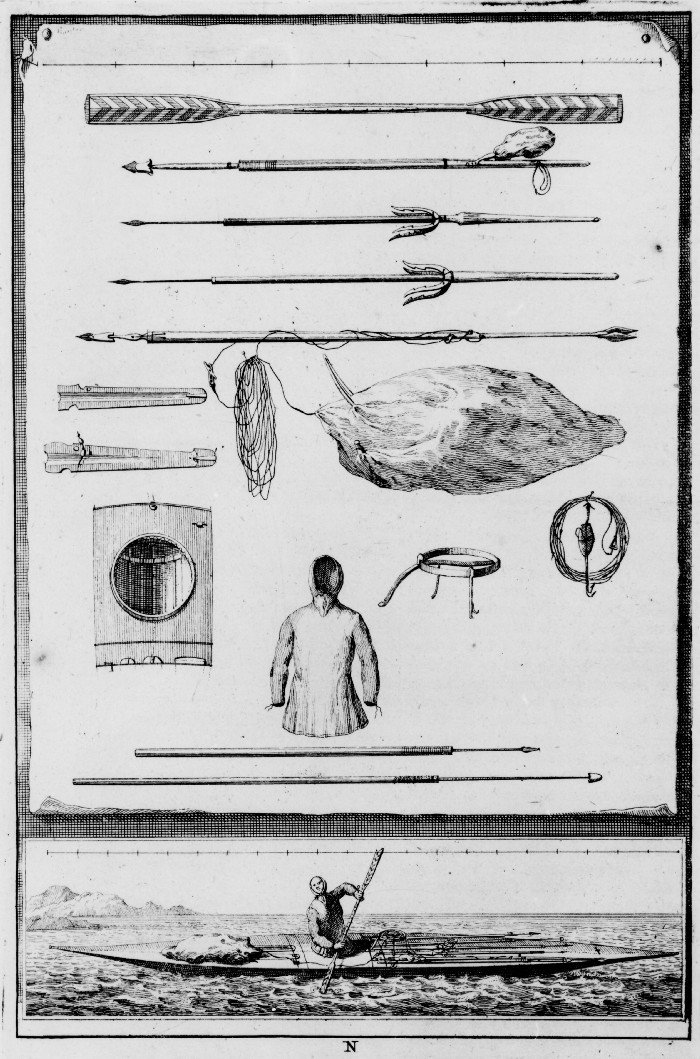
![A Tungusian cemetery on which a dead horse lies, next to some old dilapidated Tartarian dwellings and fortresses made of stone. [‘The Calmucks and Mongols put dead horses on the graves of their friends.’ Central to the religious practices of the shamanist Buryats and Mongols was the Tailgan , a blood-sacrifice to the sky god Tengri, in which a (white) horse was killed and its skin hung on a high pole. ]](https://images.hive.blog/768x0/https://miro.medium.com/max/700/1*CLMUs-sYEnGkhtQe9ctKbw.jpeg)
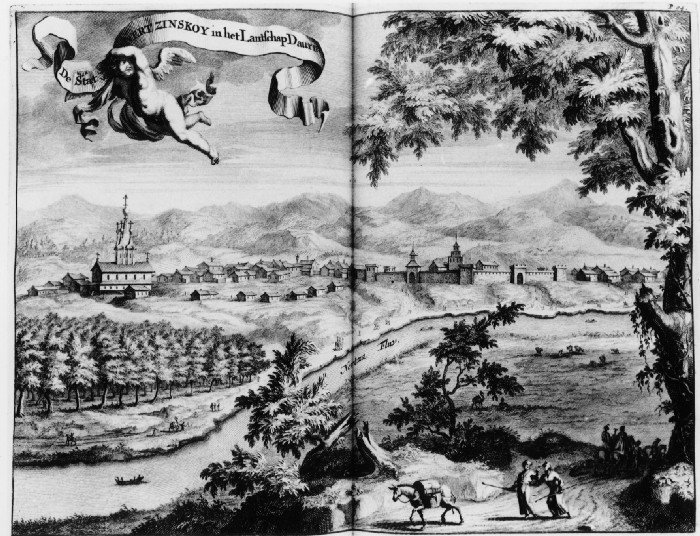
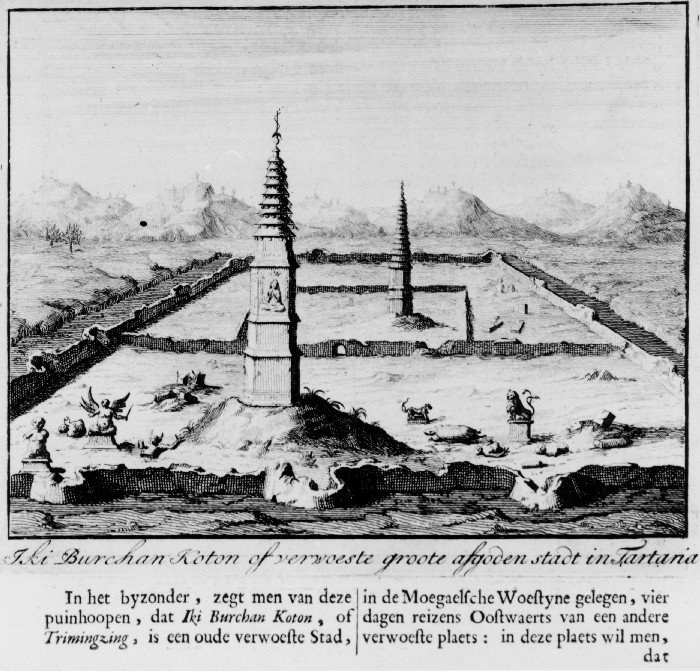
![Top: Casan [Kazan] on the Westside (Town of the Tartars surrounded by wooden walls and stakes, in it is a court and watch house and also churches, it borders on the small river Bolak.) Bottom: Casan on the North side.](https://images.hive.blog/768x0/https://miro.medium.com/max/700/1*pLwSnMNgJmRpP14dAepI8A.jpeg)
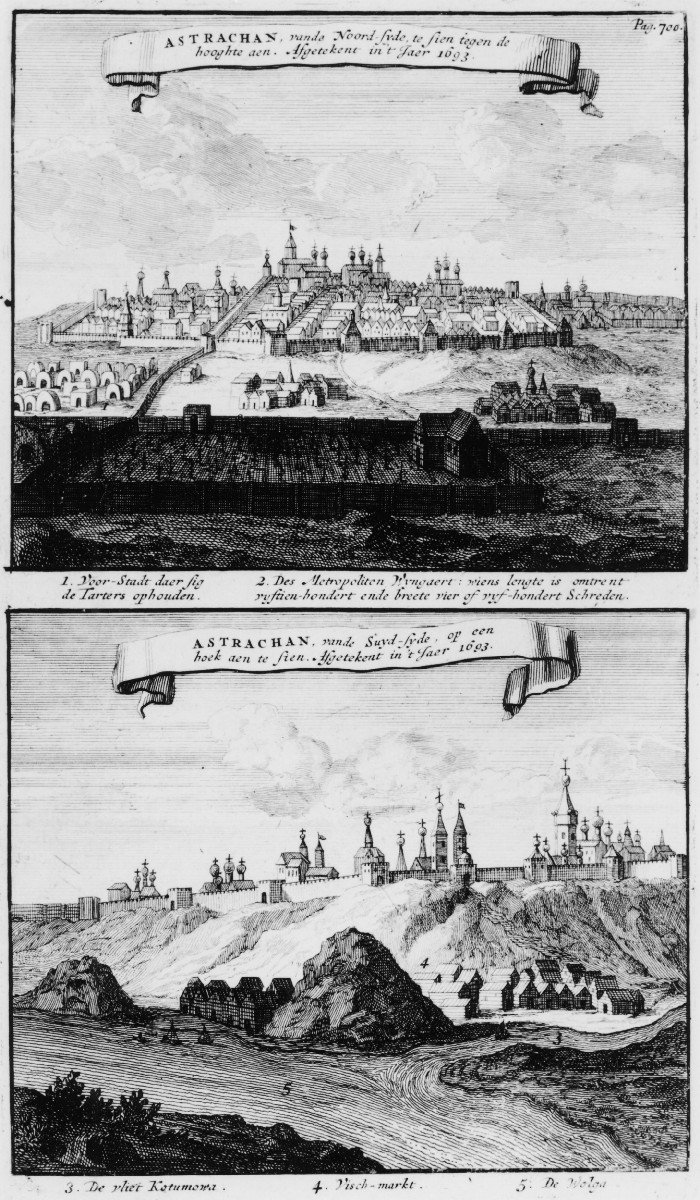
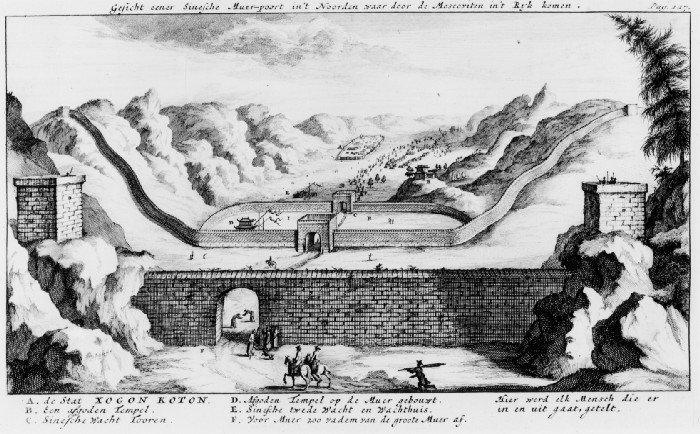
![The appearance of the ambassadors before the Chinse king [emperor]. (Farewell audience of the Ambassador with the king of China.)](https://images.hive.blog/768x0/https://miro.medium.com/max/700/1*UEhgRUS3853jVM2DJTrRVg.jpeg)
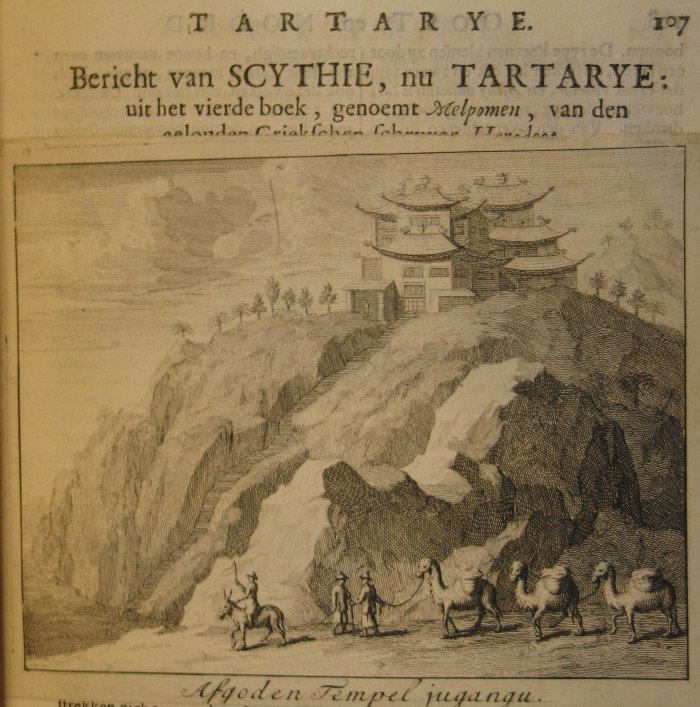
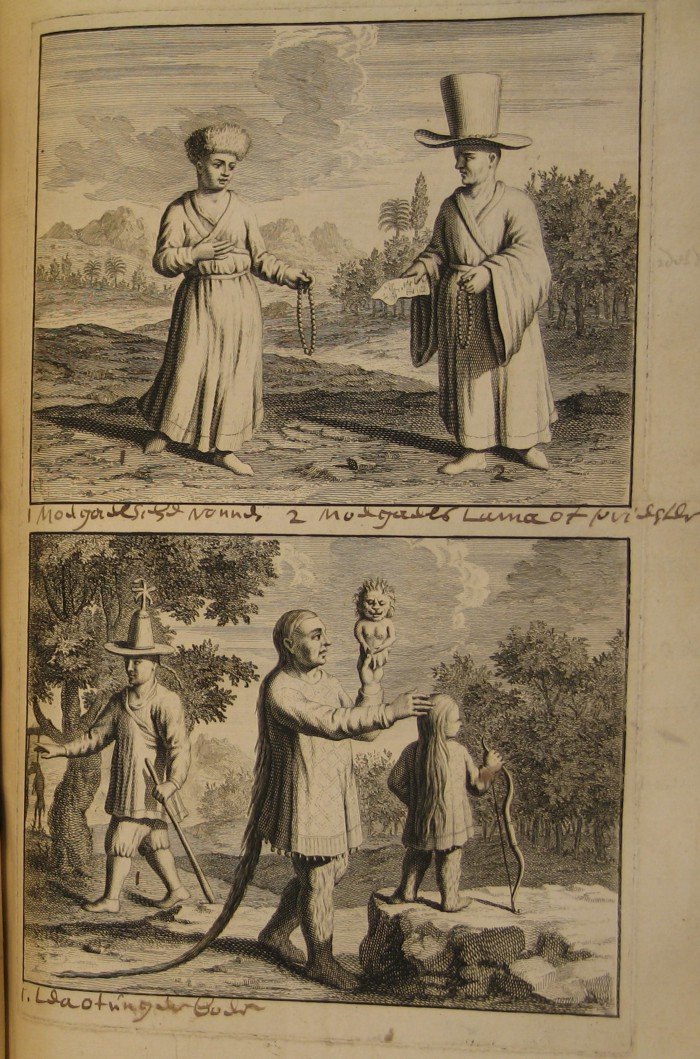
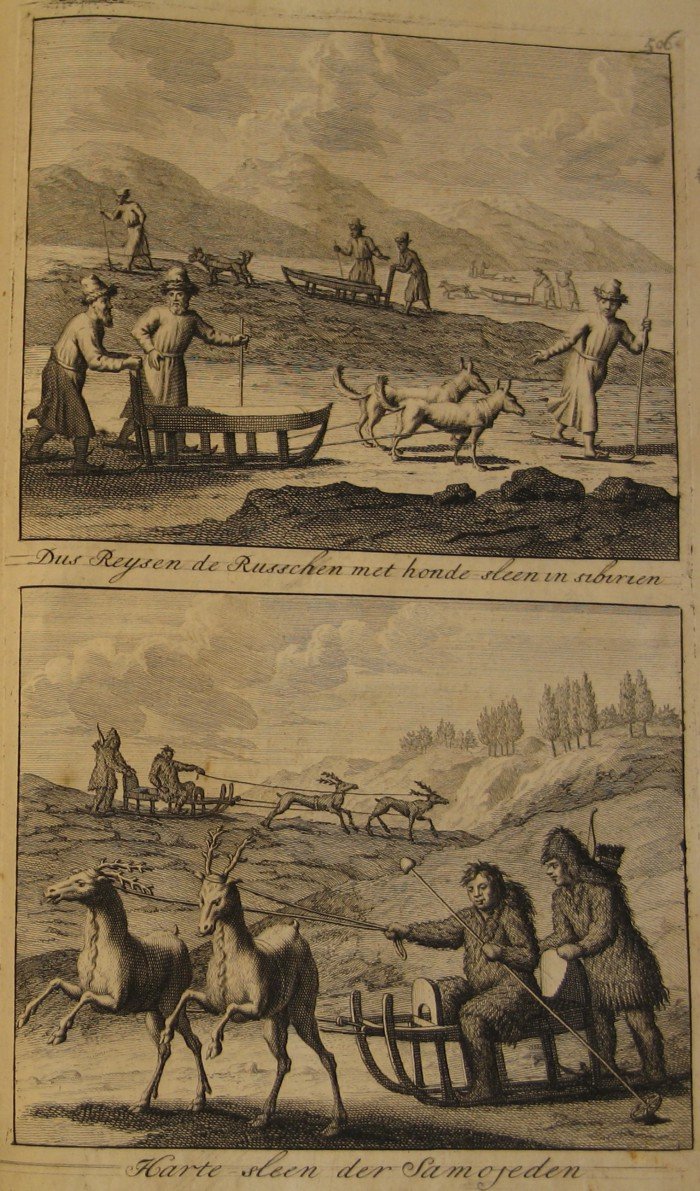
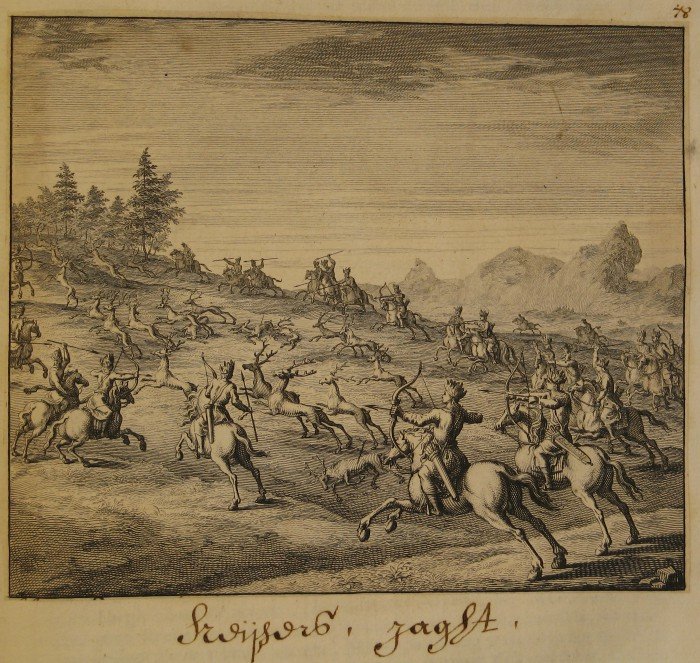
Jewelry
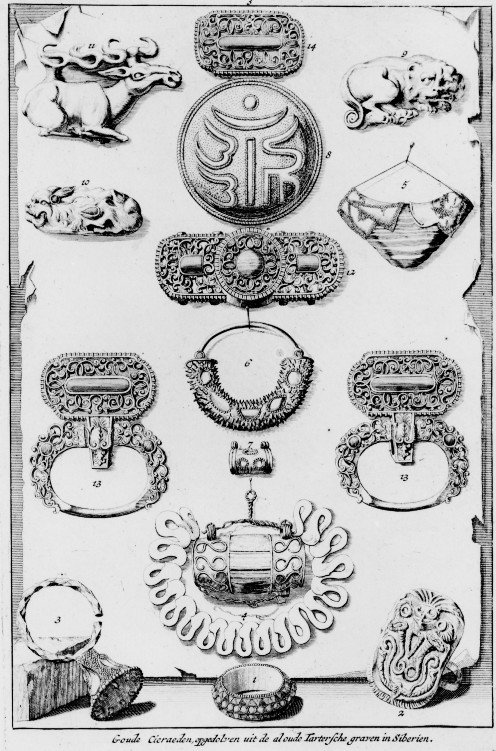
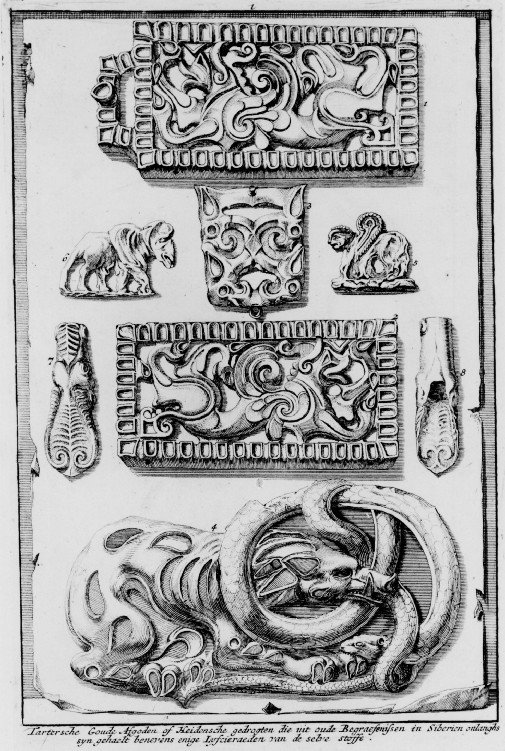
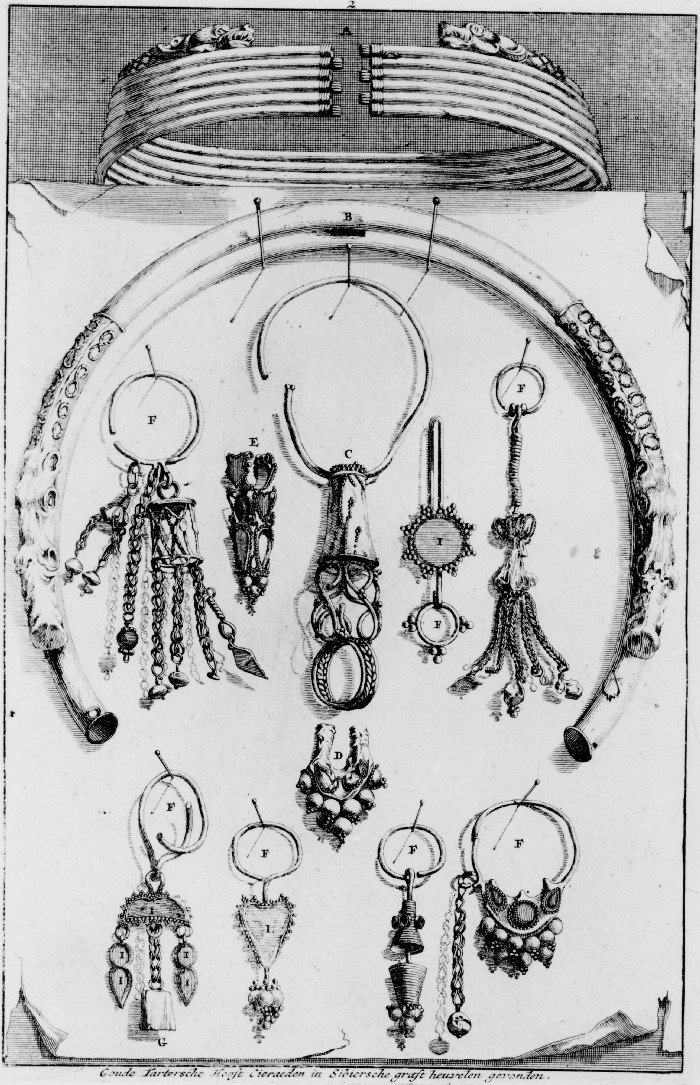


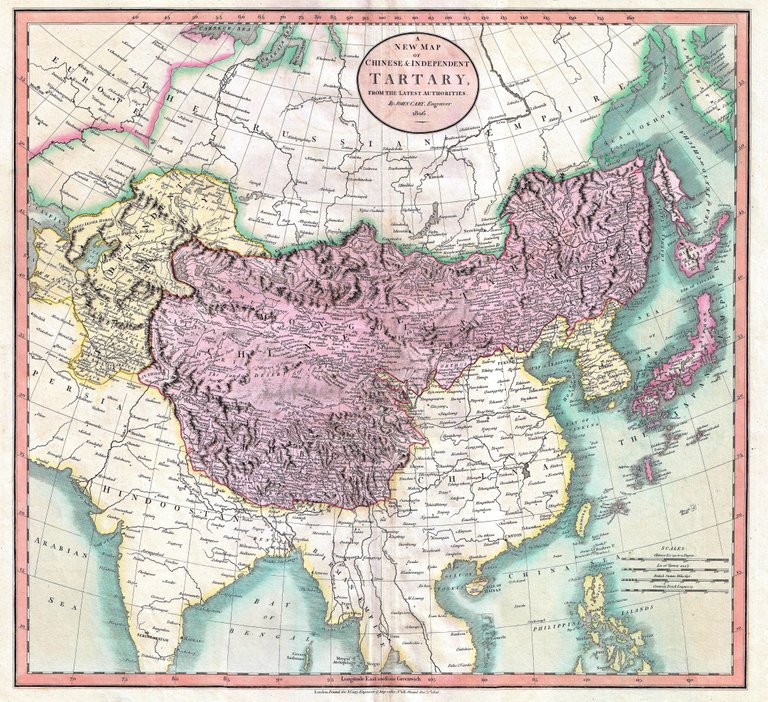
At this point I’d like to share the intro of Garry Hogg’s book 'With Peter Fleming in Tartary', it describes in great poetic detail the vast steppes of Asia and the Silk Road which ran through the lands that we are talking about now.
"Two thousand five hundred years ago Chinese merchants were dispatching their great caravans loaded with silk and porcelain jade and lacquer and other rare products of their genius and industry westwards, ever westwards, from the Orient. And at length they reached Europe, to excite the wonder and desire of people who had never dreamed such wares could exist.
These were stupendous overland journeys, covering thousands upon thousands of miles and lasting sometimes for years between start and finish. There were no roads; until the pioneer caravans had worked their arduous way westwards there were not even tracks. There were windswept plateaux, there was endless desert, there were ancient, dried-up riverbeds, there were great mountain ranges. There were sand-dunes growing a thin, tough camel scrub; there were naked rocks split and fractured by the cruel heat of the burning sun and the intense cold of frost and blizzard. But there were no roads, no signposts, nothing to show that anyone had ever passed that way before — except the skeletons of animals that had collapsed and been abandoned in the desert or mountain pass to die, and the skeletons, too, of their drivers who, in spite of their toughness and great powers of endurance, had died of exhaustion, exposure, or thirst. No man, when he set out westwards from his home in the kindlier eastern part of China, could be certain that he would ever see his home and loved ones again.
That dauntless traveler Peter Fleming, set out on one of his great journeys, from Peking, in Eastern China, to Srinagar, in Northern India: a journey of more than 3,500 miles, most of them along the ancient route of the first Chinese caravans. He has never traveled more courageously, more resourcefully, nor written about his travels more splendidly, than he did on this great journey, about which he wrote his book, “News from Tartary”.
You will not find the name “Tartary” in your atlas — unless it is a very old, out-of-date one — for the name died out a century ago, giving place to Mongolia, especially Inner Mongolia, and especially, too, that portion of Inner Mongolia today known as Sinkiang, or Chinese Turkestan. Peter Fleming, of course, knew as well as anyone that the name “Tartary” is not on modem maps; but he chose to use it in his title.
Though geographers and ethnographers refer to the nomadic peoples through whose territory he passed as “Mongols”, their ancestors were the Tartars, the men who owed allegiance first to the great and ruthless Genghis Khan and later to his grandson, Kublai. The Tartars, under a succession of great and ruthless leaders, dominated China during the early Middle Ages and maintained a reign of terror. Their rule covered the whole vast region that extended between the Sea of Japan and the River Dnieper. They were born horsemen, and grouped together in great bands, swift, unpredictable and cruel. Their home was the great Mongolian Plateau — a chain of plateaux interrupted here and there by near-impassable mountain ranges. It was, then, and remains still, a vast, empty, desolate region, almost entirely devoid of trees, blistered in summer by an unbearably hot sun and made equally unbearable in winter by the incessant ice-cold winds that sweep over it. Such changes of climate made it necessary for the inhabitants of the plateaux to be constantly on the move, in search of pasture for their flocks and herds; in search, too, of sufficient water.
The hard life made them into hard men. To exist at all they had to fights plunder, ravage, destroy. They gained a reputation for brutality, for destructiveness, that created terror wherever rumors of their movements penetrated. Across the great sweep of plateau and desert where they raided at some of the caravan routes passed; and the men of those caravans knew well that if the hordes of Tartars descended upon them, they would be wiped out to a man. It was Genghis Khan who knit together the scattered communities of Tartars and shaped them into an all-conquering force, and he did it in a curious manner.
Genghis Khan, it meant, quite simply, “Great and Perfect Warrior”. Genghis Khan soon established his Tartar Empire in North China. Then he turned south and west, and little by little conquered the whole of Asia between Lake Balkash in the west and Tibet in the south. He conquered all the territories of the Indus and the Persian Gulf, Georgia, and the Caspian Sea; when he died, his empire stretched from Korea to Bulgaria; no mean record for a lifetime of sixty-odd years! It is through this vast stretch of inhospitable, dangerous country that the so-called “Silk Road”, ran. The Silk Road — so named because it came to be the most important of the desert and mountain routes along which the Chinese silk caravans passed."

Is Tartary mentioned in the history of Russia and Mongolia?
We’ll take a look into some other civilizations to see if they’re related to the Tartarians or if they have taken part in the Tartarian history in some way.
We’ll look into the history of the ancient Russia & Tsars, Mongol Empire & Genghis Khan.
Mongol Empire
The Mongol Empire stretched from present-day Poland & Ukraine in the west to Korea in the east, and from parts of Siberia in the north to the Gulf of Oman and Vietnam in the south, covering some 33,000,000 square kilometres (13,000,000 sq mi), (22% of Earth’s total land area) and had a population of over 100 million people (about a quarter of Earth’s total population at the time).
A khaganate or khanate was a political entity ruled by a khan, khagan, khatun, or khanum. This political entity is typical for people from the Eurasian Steppe and it can be equivalent to tribal chiefdom, principality, kingdom or empire.
After Genghis Khan established appanages for his family in the Mongol Empire during his rule (1206–1227), his sons, daughters, and grandsons inherited separate sections of the empire.
History of the Tatars
Based on Wikipedia:
Crimean Khanate
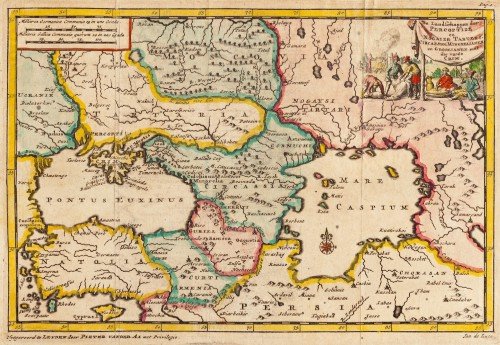
The Crimean Khanate, own name — Great Horde, in old European historiography and geography — Little Tartary (Latin: Tartaria Minor) was a Crimean Tatar state existing from 1441 to 1783, the longest-lived of the Turkic khanates that succeeded the empire of the Golden Horde. Established in 1441, it was regarded as the direct heir to the Golden Horde and to Desht-i-Kipchak.
In 1783, violating the 1774 Treaty of Küçük Kaynarca (which had guaranteed non-interference of both Russia and the Ottoman Empire in the affairs of the Crimean Khanate), the Russian Empire annexed the khanate. Among the European powers, only France came out with an open protest against this act.
Tatar confederation
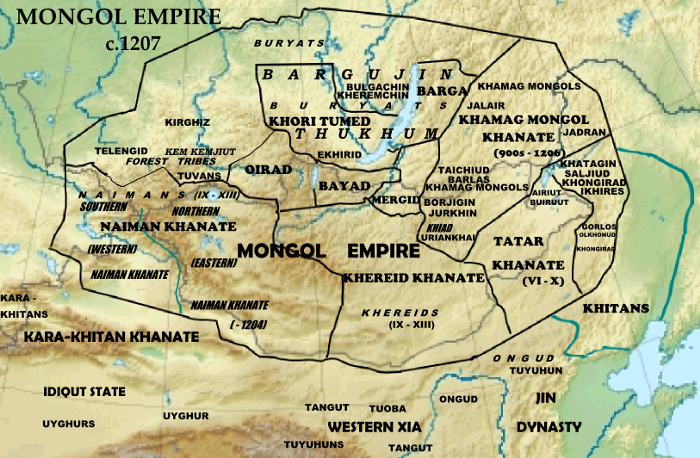
Tatar was one of the five major tribal confederations (khanlig) in the Mongolian Plateau in the 12th century.
The name “Tatar” was first transliterated in Book of Song as other name of the Rourans, who were of Proto-Mongolic Donghu ancestry. Songshu and Liangshu connected Rourans to the earlier Xiongnu while Weishu traced the Rouran’s origins back to the Donghu.
The first precise transcription of the Tatar ethnonym was on the Orkhon inscriptions referring to the Tatar confederation. Subsequently, the wider region was referred to by Europeans as “Tartary” or “Tartaria”.
The Tatars’ Rouran ancestors inhabited the north-eastern Gobi in the 5th century and founded the Rouran Khaganate. The scholar Mahmud al-Kashgari noted that the Tatars are bilingual, speaking Turkic alongside their own language.
The Tatars were subjugated by Mongol leader Temujin, who subsequently, as Genghis Khan, founded the Mongol Empire. Under the leadership of his grandson Batu Khan, Tatars accompanied Mongols westwards, driving with them many of the Turkic peoples toward the plains of Russia in the Turkic migrations.
The name Tatar was used by Russians and Europeans to denote Mongols as well as Turkic peoples under Mongol rule, especially in the Golden Horde. Later, it was used for any Turkic or even Mongolic speaking people encountered by Russians. Eventually however, the name stuck onto the Turkic Muslims of Ukraine and Russia, namely, the descendants of Muslim Volga Bulgars, Kipchaks, and Cumans, and Turkicized Mongols or Turko-Mongols (Nogais), as well as other Turkic speaking peoples (Siberian Tatars, Qasim Tatars, Mishar Tatars).
Russian History
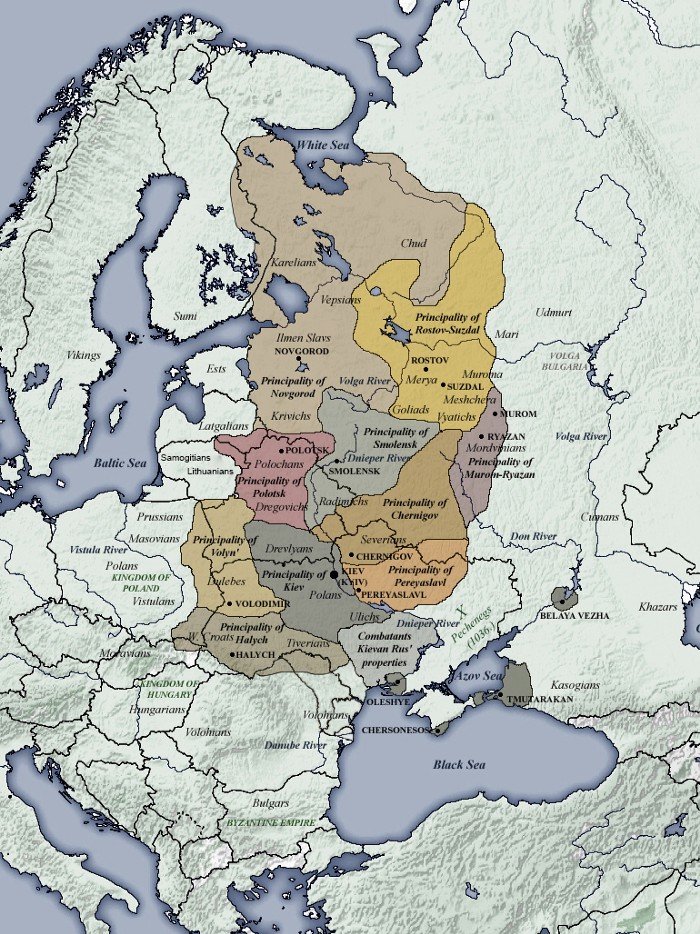
Kievan Rus’ (Greek: Ῥωσία); Latin: Rus(s)ia, Ruscia, Ruzzia) was a loose federation of East Slavic and Finnic people in Europe from the late 9th to the mid-13th century, under the reign of the Varangian Rurik dynasty. The modern nations of Belarus, Russia, and Ukraine all claim Kievan Rus’ as their cultural ancestors, with Belarus and Russia deriving their names from it.
Russia itself was ruled by the Rurikid dynasty until 16th century. The state began to decline in the late 11th century and during the 12th century, disintegrating into various rival regional powers. It was further weakened by economic factors, such as the collapse of Rus’ commercial ties to the Byzantine Empire due to the decline of Constantinople and the accompanying diminution of trade routes through its territory. The state finally fell to the Mongol invasion of the 1240s.
"The Rurik dynasty, was a dynasty founded by the Varangian prince Rurik, who established himself in Novgorod around the year AD 862. The Rurikids were the ruling dynasty of Kievan Rus’ (after 882), as well as the successor principalities of Galicia-Volhynia (after 1199), Chernigov, Vladimir-Suzdal, and the Grand Duchy of Moscow, and the founders of the Tsardom of Russia. Ivan the Terrible was the first Tsar of Russia from 1547 to 1584. They ruled until 1610 and the Time of Troubles, following which they were succeeded by the Romanovs. They are one of Europe’s oldest royal houses, with numerous existing cadet branches.
As a ruling dynasty, the Rurik dynasty held its own in some part of Russia for a total of twenty-one generations in male-line succession, from Rurik (died 879) to Vasili IV of Russia (died 1612), a period of more than 700 years."
The House of Romanov was the reigning royal house of Russia from 1613 to 1917.
On 1613, Michael Romanov was elected Tsar of Russia establishing the Romanovs as Russia’s second reigning dynasty. Michael’s grandson Peter I established the Russian Empire in 1721, transforming the country into a great power through a series of wars and reforms.
The abdication of Tsar Nicholas II on 1917 as a result of the February Revolution ended 304 years of Romanov rule, establishing the Russian Republic under the Russian Provisional Government in the lead up to the Russian Civil War. In 1918, the Tsar and his family were executed by the Bolsheviks and the 47 survivors of the House of Romanov’s 65 members went into exile abroad.
This shows us that Russia’s dynasties and Tsars could easily conquer countries/areas and according to the declassified CIA document, even delete some parts of history to hide their actions.
As we know:
“History is always written by the winners.
When two cultures clash, the loser is obliterated, and the winner writes the history books — books which glorify their own cause and disparage the conquered foe. As Napoleon once said, ‘What is history, but a fable agreed upon?”
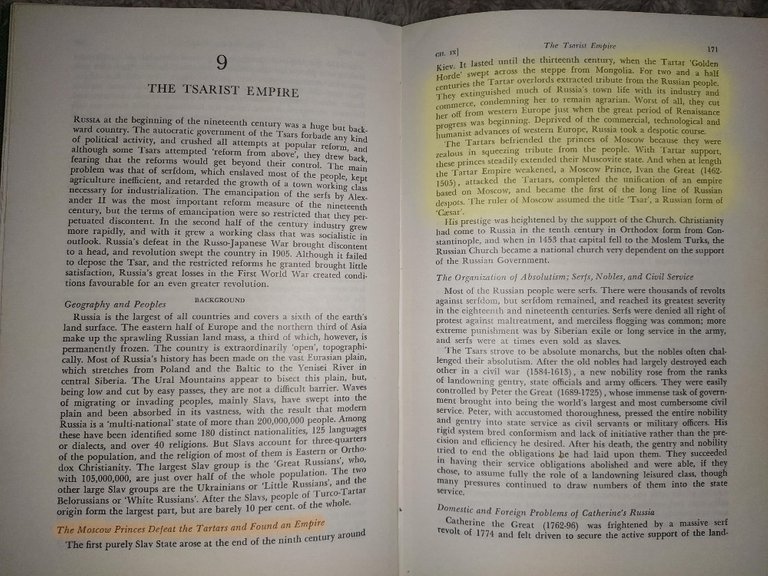

So, the bottom line from the Mongolian and Russian history is that the Tartarian tribes existed since the 4–5th century AD. Genghis Khan united some of these nations and created the Mongol Empire in the 1200s. When he died the empire was divided in Khanates where his sons & grandsons ruled. Later, Russian Tsars defeated them and occupied the Tartarian lands. The Tartarian lands can be at the location of modern Turkestan, Mongolia, China & Russia/Siberia.
Max Igan — History and Tartaria
Max Igan's Youtube channel TheCrowHouse got deleted today, he had created a great video talking about Tartaria, the importance of history and explored if it could be altered by the ruling elite of governments throughout the centuries. Here's a podcast where he talks about Tartaria:
Conspiracy Theories Online — The Mud Flood and Free Energy
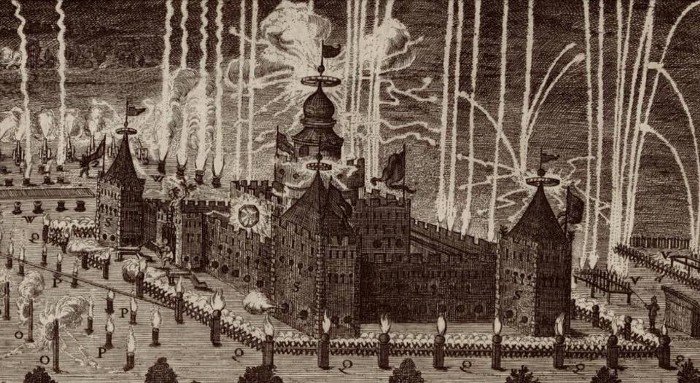
If you search for ‘Tartary’ or ‘Tartaria’ on Youtube you can find many videos claiming that Tartaria was a vast empire that was defeated by the modern day’s elite, they had gothic architecture buildings that produced free energy out of the ether and that their entire history was hidden & deleted.
The mud flood theory refers to buildings that are half buried in the ground due to a recent big flood that isn’t mentioned by anyone and how it may relate to the lost nation of Tartaria, the reset of civilization, and the rewriting of history as we know it. They go as far as to even claim that the entire history could be altered, that the floods and civilizations of 2,500 years ago actually happened and existed 500 years ago.
Conclusion
My personal opinion on these conspiracy theories is that the history can easily be re-written by the use of genocides and oppressive dictatorships through the centuries, as Max Igan states on his video above, but conspiracy theorists are portraying wild, far-fetched ideas on this one, based on almost no actual facts.
The way I’m approaching these theories is to always look for facts and truth to see if any logical assumptions can be made, and in this case the scale weighs more on the side of fantasy than truth. Sometimes these theories can be right but we don’t have enough available knowledge and evidence to prove or debunk them.
Book Mentions
Tartaria is mentioned in many books of the 18th and 19th centuries by European travelers.
A list of these books:
- History Of Mufcovy Tartary Perfia And Other Countries
- History of the two Tartar conquerors of China : including the two journeys into Tartary of Father - Ferdinand Verhiest
- Narrative of a pedestrian journey through Russia and Siberian Tartary
- Tibet, Tartary And Mongolia Ed. 2nd
- Travels in Russia, Tartary and Turkey
- With Peter Fleming in Tartary
- Tibet, Tartary, and Mongolia ; their social and political condition, and the religion of Boodh, as there existing
I originally posted this article on my Medium here: https://medium.com/history-of-yesterday/tartary-tartaria-the-mystery-of-an-empire-lost-in-history-a99abb5cc9b6
Some of the info was derived from this article: https://www.stolenhistory.org/threads/tartary-an-empire-hidden-in-history-it-was-bigger-than-russia-once.40/

Join the Akatsuki Community.
Congratulations @nagato-dharma! You have completed the following achievement on the Hive blockchain and have been rewarded with new badge(s) :
You can view your badges on your board And compare to others on the Ranking
If you no longer want to receive notifications, reply to this comment with the word
STOPDo not miss the last post from @hivebuzz:
Support the HiveBuzz project. Vote for our proposal!
Hi! I am a robot. I just upvoted you! I found similar content that readers might be interested in:
https://medium.com/history-of-yesterday/tartary-tartaria-the-mystery-of-an-empire-lost-in-history-a99abb5cc9b6